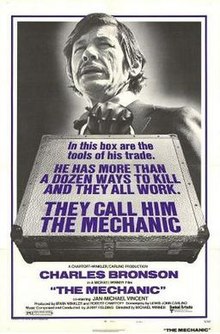
Charles Bronson was an American actor. He was known for his roles in action films and his "granite features and brawny physique". Bronson was born into extreme poverty in Ehrenfeld, Pennsylvania, a coal mining town in Pennsylvania's Allegheny Mountains. Bronson's father, a miner, died when Bronson was young. Bronson himself worked in the mines as well until joining the United States Army Air Forces in 1943 to fight in World War II. After his service, he joined a theatrical troupe and studied acting. During the 1950s, he played various supporting roles in motion pictures and television, including anthology drama TV series in which he would appear as the main character. Near the end of the decade, he had his first cinematic leading role in Machine-Gun Kelly (1958).

Mackenna's Gold is a 1969 American Western film directed by J. Lee Thompson, starring an ensemble cast featuring Gregory Peck, Omar Sharif, Telly Savalas, Ted Cassidy, Camilla Sparv and Julie Newmar in lead roles. It was photographed in Super Panavision 70 and Technicolor by Joseph MacDonald, with original music by Quincy Jones.
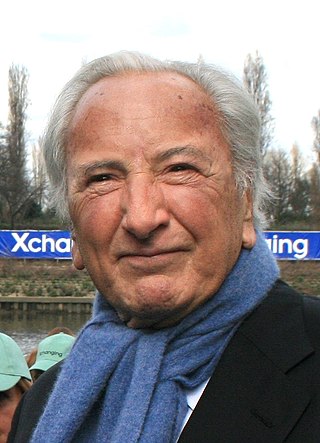
Robert Michael Winner was a British filmmaker, writer, and media personality. He is known for directing numerous action, thriller, and black comedy films in the 1960s, 1970s and 1980s, including several collaborations with actors Oliver Reed and Charles Bronson.
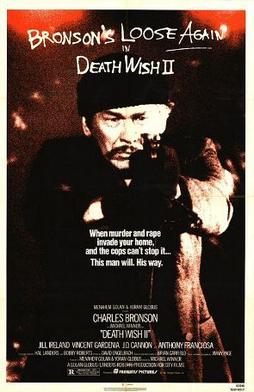
Death Wish II is a 1982 American vigilante action-thriller film directed and co-edited by Michael Winner. It is the first of four sequels to the 1974 film Death Wish. It is the second installment in the Death Wish film series. In the story, architect Paul Kersey moves to Los Angeles with his daughter. After his daughter is murdered at the hands of several gang members, Kersey once again chooses to become a vigilante. Unlike the original, in which he hunts down every criminal he encounters, Kersey only pursues his family's attackers. The sequel makes a complete breakaway from the Brian Garfield novels Death Wish and Death Sentence, redefining the Paul Kersey character. It was succeeded by Death Wish 3.

Armed and Dangerous is a 1986 American comedy film directed by Mark L. Lester and starring John Candy, Eugene Levy, Robert Loggia and Meg Ryan. It was filmed on location in and around Los Angeles, California.
William Froug was an American television writer and producer. His producing credits included the series The Twilight Zone, Gilligan's Island, and Bewitched. He was a writer for, among other shows, The Dick Powell Show, Charlie's Angels, and Adventures in Paradise. He authored numerous books on screenwriting, including Screenwriting Tricks of the Trade, Zen and the Art of Screenwriting I and II, The Screenwriter Looks at The Screenwriter, and How I Escaped from Gilligan's Island: Adventures of a Hollywood Writer-Producer, published in 2005 by the University of Wisconsin Press.

Jan-Michael Vincent was an American actor known for portraying helicopter pilot Stringfellow Hawke in the TV series Airwolf (1984–1987) and the protagonist, Matt Johnson, in the 1978 film Big Wednesday. He also starred as Byron Henry in the 1983 miniseries The Winds of War.
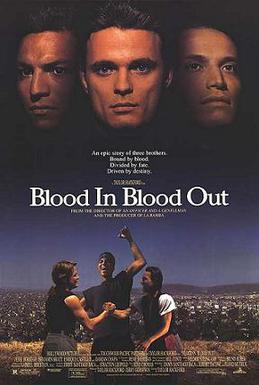
Blood In Blood Out is a 1993 American epic crime drama film directed by Taylor Hackford that has become a cult-classic film among the Mexican-American community. It follows the intertwining lives of three Chicano relatives from 1972 to 1984. They start out as members of a street gang in East Los Angeles, and as dramatic incidents occur, their lives and friendships are forever changed. Blood In Blood Out was filmed in 1991 throughout Los Angeles and inside California's San Quentin State Prison.

Death Hunt is a 1981 Western action film directed by Peter Hunt. The film stars Charles Bronson, Lee Marvin, Angie Dickinson, Carl Weathers, Maury Chaykin, Ed Lauter and Andrew Stevens. Death Hunt was a fictionalized account of the Royal Canadian Mounted Police (RCMP) pursuit of a man named Albert Johnson. Earlier films exploring the same topic were The Mad Trapper (1972), a British made-for-television production and Challenge to Be Free (1975).
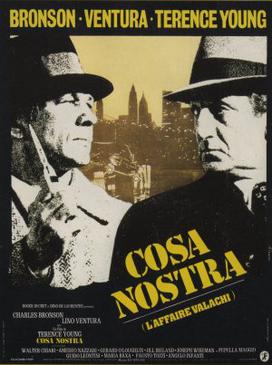
The Valachi Papers is a 1972 neo noir crime film directed by Terence Young. It is an adaptation of the 1968 non-fiction book of the same name by Peter Maas, with a screenplay by Stephen Geller. It tells the story of Joseph Valachi, a Mafia informant in the early 1960s who was the first ever mafioso to acknowledge the organization's existence. The film stars Charles Bronson as Valachi and Lino Ventura as crime boss Vito Genovese, with Jill Ireland, Walter Chiari, Joseph Wiseman, Gerald S. O'Loughlin, Guido Leontini, Amedeo Nazzari, Fausto Tozzi, Pupella Maggio, and Angelo Infanti.

Lawman is a 1971 American revisionist Western film produced and directed by Michael Winner and starring Burt Lancaster, Robert Ryan, Lee J. Cobb and Robert Duvall.
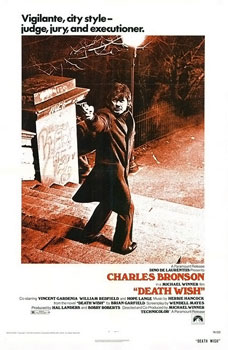
Death Wish is a 1974 American vigilante action-thriller film loosely based on the 1972 novel of the same title by Brian Garfield. Directed by Michael Winner, the film stars Charles Bronson as Paul Kersey, an architect who becomes a vigilante after his wife is murdered and daughter molested during a home invasion. It was the first film in the Death Wish film series. It was followed eight years later with Death Wish II and other similar films.

The Statue is a 1971 British comedy film starring David Niven, Robert Vaughn, and Virna Lisi and directed by Rodney Amateau. John Cleese and Graham Chapman appear in early career roles as the Niven character's psychiatrist and a newsreader, respectively. Niven plays a Nobel Prize-winning professor who suspects his wife, played by Lisi, of infidelity when she makes and unveils an 18-foot statue of him with private parts recognisably not his own. The film is based on the play called Chip, Chip, Chip by Alec Coppel.
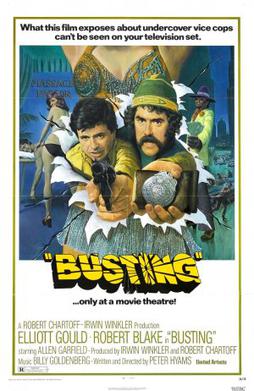
Busting is a 1974 American buddy cop film, directed by Peter Hyams in his theatrical directorial debut, starring Elliott Gould and Robert Blake as police detectives of the Los Angeles Police Department (LAPD). The film was the main inspiration for the cop series Starsky & Hutch, which premiered in 1975 and, like this film, also featured Antonio Fargas.

Assassination is a 1987 American action thriller film directed by Peter Hunt and starring Charles Bronson, Jill Ireland, Charles Howerton, Jan Gan Boyd, Stephen Elliott, and Chris Alcaide. The plot is about a bodyguard who is assigned to protect the First Lady of the United States against an assassination plot.
Bill L. Norton is an American film director, writer and producer. Among many projects, he is the writer-director of Cisco Pike and More American Graffiti.
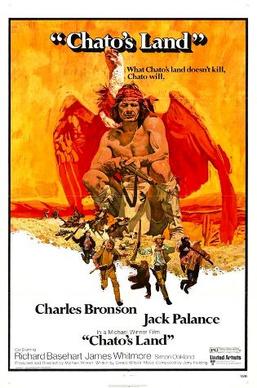
Chato's Land is a 1972 Western Technicolor film directed by Michael Winner, starring Charles Bronson and Jack Palance.
Steve Carver was an American film director, producer, and photographer.
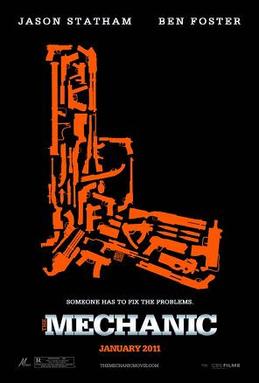
The Mechanic is a 2011 American action thriller film directed by Simon West, starring Jason Statham, Ben Foster, Tony Goldwyn, Donald Sutherland, James Logan, Mini Andén, Jeff Chase, and Christa Campbell. Written by Lewis John Carlino and Richard Wenk, it is a remake of the 1972 film of the same name. Statham stars as Arthur Bishop, a professional assassin who specializes in making his hits look like accidents, suicides and petty criminals' acts.
Lewis John Carlino was an American screenwriter and director. His career spanned five decades and included such works as The Fox, The Brotherhood, The Mechanic, The Sailor Who Fell from Grace with the Sea, I Never Promised You a Rose Garden, Resurrection, and The Great Santini. Carlino was nominated for many awards, including the Academy Award for Best Adapted Screenplay.
